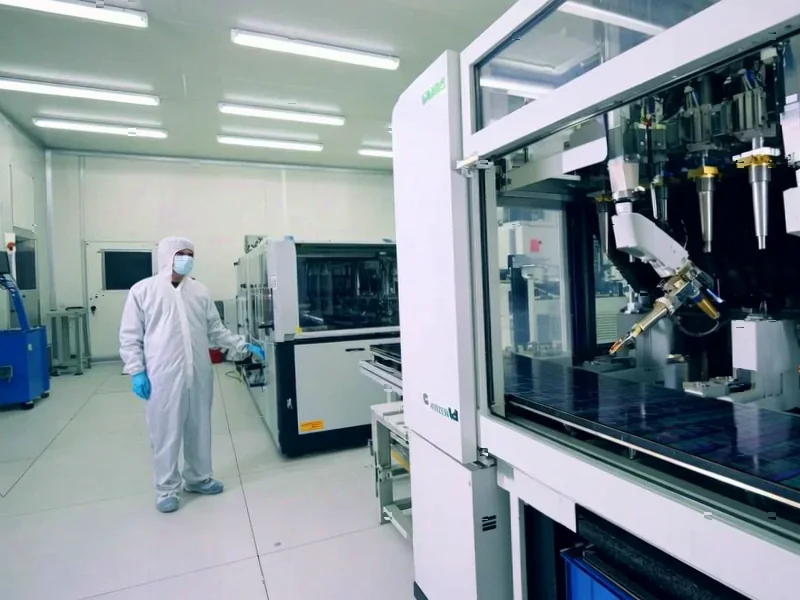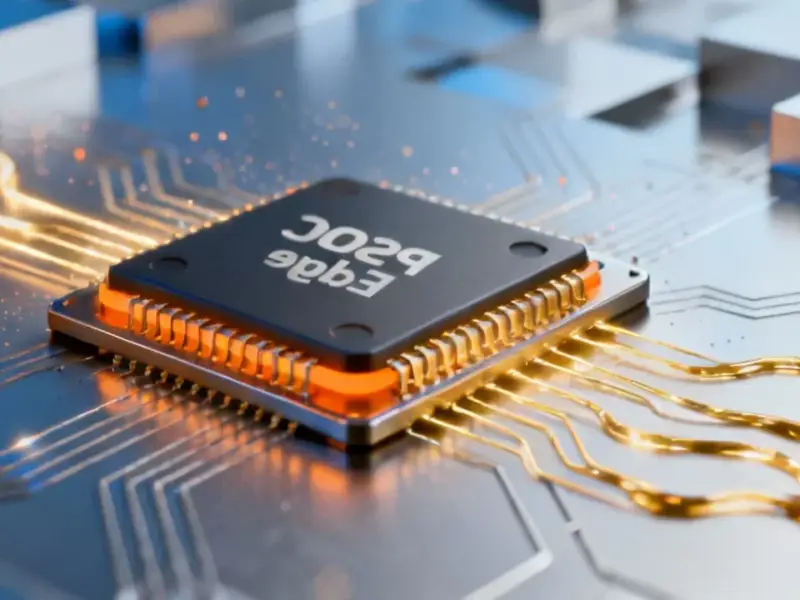According to CRN, at Nvidia’s GTC DC 2025 event last week, the AI infrastructure giant demonstrated its expanding dominance through new partnerships with companies including Palantir, CrowdStrike, Oracle, and HPE, while CEO Jensen Huang emphasized alignment with President Trump on U.S. “reindustrialization.” Huang made his first keynote appearance at the Washington, D.C. offshoot of Nvidia’s flagship GTC event, where he credited the Trump administration’s “pro-energy initiative” for enabling AI industry growth and disclosed a $1 billion investment in Nokia. The company also provided significant new financial disclosures reflecting amplified demand for its Blackwell products and upcoming Rubin GPU launch, with Huang specifically thanking President Trump for policies supporting the AI data center build-out. This strategic positioning marks Nvidia’s deeper integration into national industrial policy.
The Manufacturing Mandate Reshapes Tech Strategy
Nvidia’s decision to host a major event in Washington D.C. represents more than geographic convenience—it signals a fundamental recalibration of how technology giants approach government relations. For decades, Silicon Valley maintained an arms-length relationship with political leadership, but Huang’s explicit endorsement of Trump’s energy and manufacturing policies indicates that AI infrastructure has become too critical to remain apolitical. The “reindustrialization” framework directly benefits Nvidia’s bottom line, as every new manufacturing facility requires sophisticated AI systems for optimization, quality control, and logistics. This alignment creates both opportunity and risk—while it may accelerate domestic chip production and data center construction, it also ties Nvidia’s fortunes to specific political outcomes and could complicate international relationships in markets where Trump policies face resistance.
Partnership Strategy Reveals Enterprise Focus
The partnership announcements with Palantir, CrowdStrike, Oracle, and HPE demonstrate Nvidia’s deliberate pivot toward vertical-specific AI solutions rather than just selling raw computing power. Palantir brings government and intelligence agency relationships, CrowdStrike adds cybersecurity expertise, Oracle provides cloud infrastructure, and HPE delivers enterprise hardware integration. This ecosystem approach allows Nvidia to embed its technology deeper into business operations, making switching costs prohibitively high for customers. However, this strategy also creates dependency risks—if any of these partners stumble technically or reputationally, it could reflect poorly on Nvidia’s platform. The $1 billion Nokia investment particularly stands out as a play for telecommunications infrastructure, positioning Nvidia at the edge computing frontier where 5G and AI converge.
Blackwell Demand Signals Enterprise AI Maturation
The substantial Blackwell demand disclosure suggests we’re witnessing the second wave of enterprise AI adoption. While the initial ChatGPT explosion drove consumer-facing applications, Blackwell’s traction indicates serious production deployments across finance, healthcare, manufacturing, and government. Enterprises are moving beyond experimentation to building AI directly into core business processes. This transition creates both scaling opportunities and implementation challenges—many organizations lack the technical talent to properly deploy these systems, creating a services gap that Nvidia’s partners will need to fill. The Rubin GPU mention also strategically maintains market anticipation, ensuring customers don’t delay purchases waiting for next-generation hardware.
The Unspoken Energy Challenge
Huang’s emphasis on energy policy highlights the elephant in the AI room—exponential computing demands require unprecedented power infrastructure. Training increasingly sophisticated models consumes energy comparable to small cities, and inference workloads scale with usage. The Trump administration’s pro-energy stance may facilitate short-term growth, but long-term sustainability questions remain unanswered. Data center construction already faces power availability constraints in many regions, and the environmental impact of AI’s energy appetite could become a regulatory and reputational risk. Nvidia’s alignment with expanded energy production suggests the company believes computational progress cannot be constrained by current green energy capacity—a position that may create friction with climate-conscious investors and European markets pursuing different energy strategies.
Geopolitical Positioning and Global Implications
Nvidia’s Washington debut occurs amid escalating tech sovereignty battles between the U.S., China, and the EU. By aligning with U.S. manufacturing revival, Nvidia positions itself as a national champion in the AI arms race, potentially gaining preferential treatment in government contracts and regulatory considerations. However, this stance may complicate relationships in markets pursuing technological independence. The EU’s increasing focus on homegrown AI solutions and China’s determined semiconductor development mean Nvidia’s political alignment could accelerate decoupling trends. For global enterprises, this political dimension adds another layer of complexity to AI procurement decisions, potentially forcing multinational corporations to maintain separate AI stacks for different regulatory environments.




